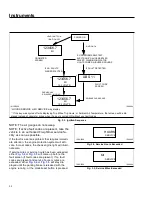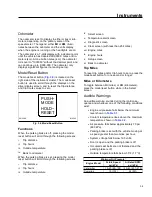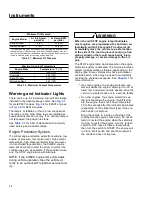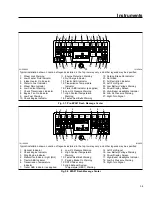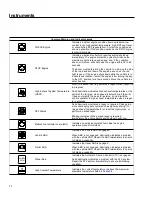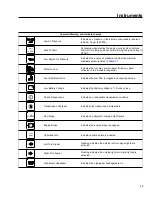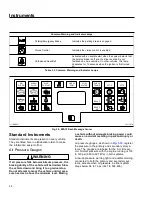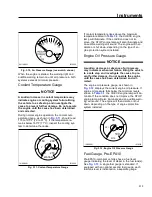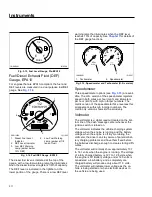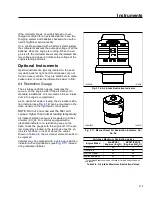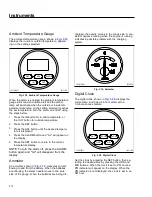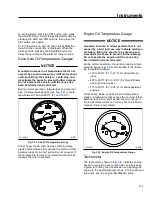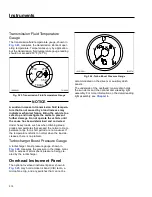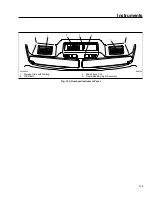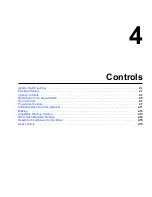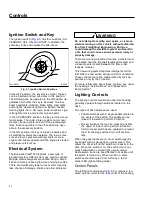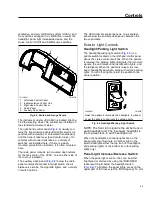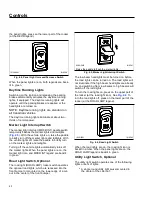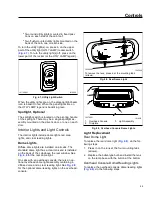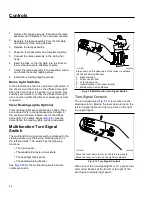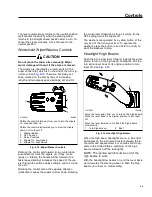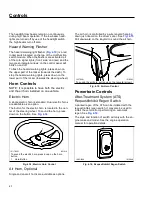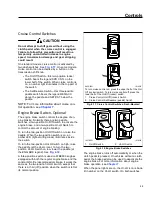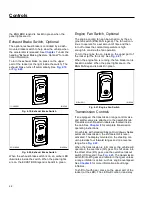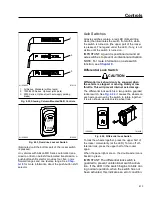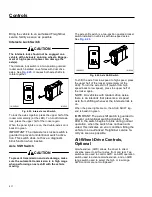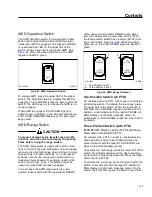
To set the alarm, press the SET button, then press
the ALARM button. Select the desired alarm time by
pressing the HRS and MIN buttons, then press the
SET button once again.
To turn the alarm on and off, press the ALARM but-
ton when the current time is displayed. When the
alarm sounds, pressing the SNOOZE button will
delay the sounding of the alarm for three minutes.
Drive Axle Oil Temperature Gauges
NOTICE
A sudden increase in oil temperature that is not
caused by a load increase may indicate mechani-
cal failure. Bring the vehicle to a safe stop and
investigate the cause to prevent further damage.
Do not operate the vehicle until the cause has
been determined and corrected.
During normal operation, forward-rear and rear-rear
axle oil temperature gauges (see
Fig. 3.21
) should
read between 160 and 220°F (71 and 104°C).
Under heavy loads, such as when climbing steep
grades, temperatures that exceed the normal oil tem-
perature range for a short period are not unusual. If
the temperature returns to normal when the load de-
creases, there is no problem.
Engine Oil Temperature Gauge
NOTICE
A sudden increase in oil temperature that is not
caused by a load increase may indicate mechani-
cal failure. Bring the vehicle to a safe stop and
investigate the cause to prevent further damage.
Do not operate the engine until the cause has
been determined and corrected.
During normal operation, the optional engine oil tem-
perature gauge (
Fig. 3.22
) should read in the follow-
ing temperature ranges:
•
160 to 195°F (71 to 91°C) for Caterpillar en-
gines
•
200 to 260°F (93 to 126°C) for Detroit Diesel
and Cummins engines
•
177 to 203°F (81 to 95°C) for Mercedes-Benz
engines
Under heavy loads, such as when climbing steep
grades, temperatures that exceed the normal oil tem-
perature range for a short period are not unusual. If
the temperature returns to normal when the load de-
creases, there is no problem.
Tachometer
The tachometer, shown in
Fig. 3.9
, indicates engine
speed in revolutions per minute (rpm) and serves as
a guide for shifting the transmission and keeping the
engine in the appropriate rpm range. For low idle and
rated rpm, see the engine identification plate.
10/10/2001
f610571
Fig. 3.21, Axle Oil Temperature Gauge
10/10/2001
f610569
Fig. 3.22, Engine Oil Temperature Gauge
Instruments
3.14




